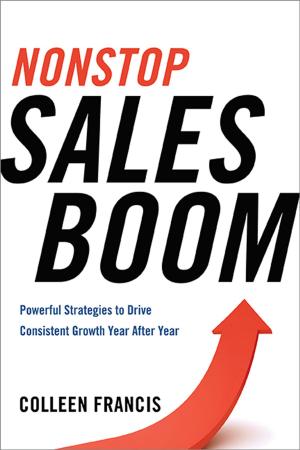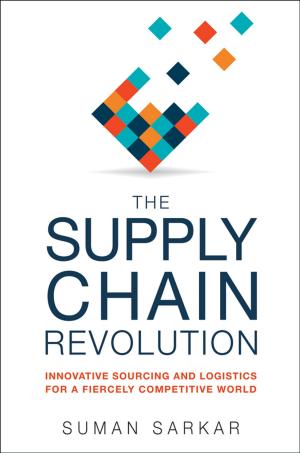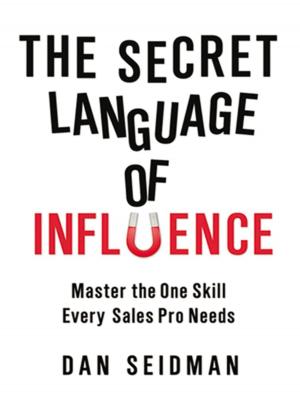The Innovation Killer
How What We Know Limits What We Can Imagine -- and What Smart Companies Are Doing About It
Business & Finance, Economics, Development & Growth| Author: | Cynthia BARTON RABE | ISBN: | 9780814429624 |
| Publisher: | AMACOM | Publication: | July 17, 2006 |
| Imprint: | AMACOM | Language: | English |
| Author: | Cynthia BARTON RABE |
| ISBN: | 9780814429624 |
| Publisher: | AMACOM |
| Publication: | July 17, 2006 |
| Imprint: | AMACOM |
| Language: | English |
"Knowledge is good,"" preaches the inscription under the statue of college founder Emil Faber in the film Animal House. But as valid as that declamation may be at a university, in the corporate world what passes for knowledge can be a killer. Companies and teams rely on ""what we know"" and ""the way we do things here"" to speed decision making and maintain a sense of order. But progress demands change, risk taking, and occasionally, revolution. Processes must be overhauled, assumptions challenged, taboos broken. But how do you do it? Who among the group will take responsibility for a brand new initiative or unorthodox decision? Who will be willing to stand up and say, in essence, that the emperor has no clothes? As much as we laud the concept of ""thinking outside of the box,"" most of us think it’s a lot safer to stay inside. It’s time to call in a ""zero-gravity thinker"" who is not weighed down by the twin innovation killers -- GroupThink and its close cousin, ExpertThink. Such outsiders are in plentiful supply, whether from the department down the hall, the branch office, a consulting firm or even another company. Unburdened by all the nagging issues that plague even very effective groups, the outsider will know new ways around a problem, identify possibilities where none seemed to exist, and spot potential problems before they spin out of control. According to The Innovation Killer, the right zero gravity thinker will ideally possess the following traits: Psychological distance: the most important tool of the impartial observer, it enables him or her to maintain an open mind. Renaissance tendencies: a wide range of interests, experiences, and influences more readily inspires innovative approaches. Related expertise: strength in a relevant area may lead to ""intersection points"" at which solutions are often found. The book helps identify when and why you should call in a collaborator, where to find one, and how you and your team can start working with him or her. There are also strategies for turning yourself into a zero-gravity thinker when it’s simply not practical to bring in a true outsider. Knowledge is good, except when it trumps real innovation. Whether your team is too focused on the forest or can’t see past the trees, this book will help you add the perspective you need to make the great decisions that will move your company forward.
"Knowledge is good,"" preaches the inscription under the statue of college founder Emil Faber in the film Animal House. But as valid as that declamation may be at a university, in the corporate world what passes for knowledge can be a killer. Companies and teams rely on ""what we know"" and ""the way we do things here"" to speed decision making and maintain a sense of order. But progress demands change, risk taking, and occasionally, revolution. Processes must be overhauled, assumptions challenged, taboos broken. But how do you do it? Who among the group will take responsibility for a brand new initiative or unorthodox decision? Who will be willing to stand up and say, in essence, that the emperor has no clothes? As much as we laud the concept of ""thinking outside of the box,"" most of us think it’s a lot safer to stay inside. It’s time to call in a ""zero-gravity thinker"" who is not weighed down by the twin innovation killers -- GroupThink and its close cousin, ExpertThink. Such outsiders are in plentiful supply, whether from the department down the hall, the branch office, a consulting firm or even another company. Unburdened by all the nagging issues that plague even very effective groups, the outsider will know new ways around a problem, identify possibilities where none seemed to exist, and spot potential problems before they spin out of control. According to The Innovation Killer, the right zero gravity thinker will ideally possess the following traits: Psychological distance: the most important tool of the impartial observer, it enables him or her to maintain an open mind. Renaissance tendencies: a wide range of interests, experiences, and influences more readily inspires innovative approaches. Related expertise: strength in a relevant area may lead to ""intersection points"" at which solutions are often found. The book helps identify when and why you should call in a collaborator, where to find one, and how you and your team can start working with him or her. There are also strategies for turning yourself into a zero-gravity thinker when it’s simply not practical to bring in a true outsider. Knowledge is good, except when it trumps real innovation. Whether your team is too focused on the forest or can’t see past the trees, this book will help you add the perspective you need to make the great decisions that will move your company forward.















